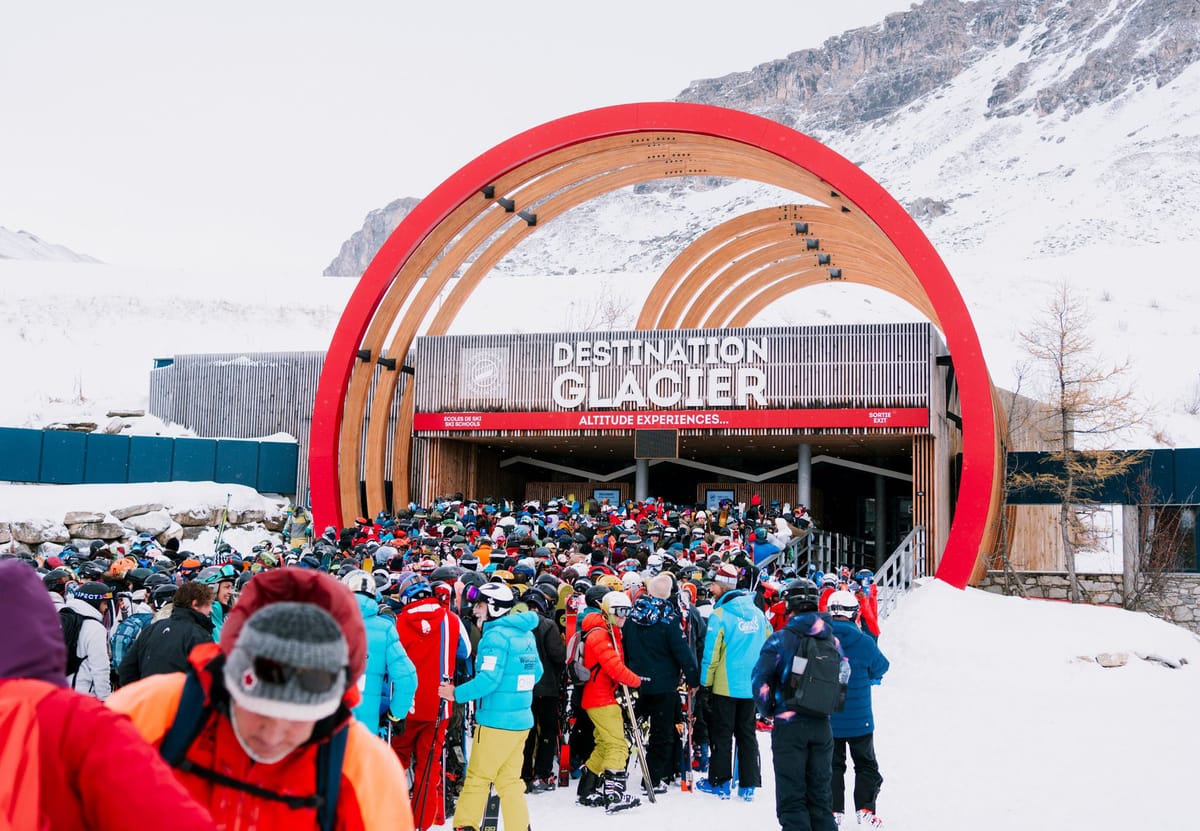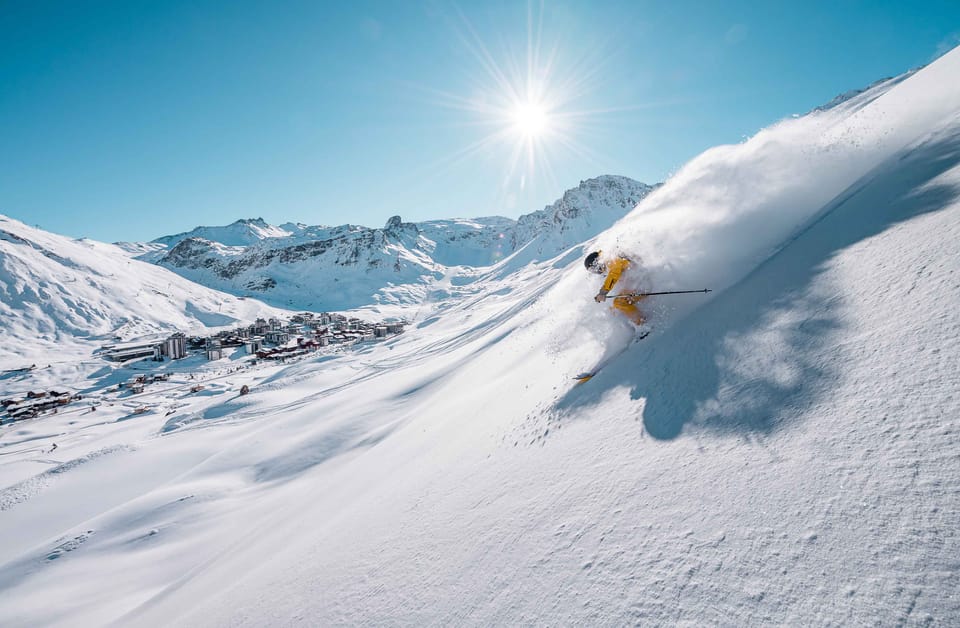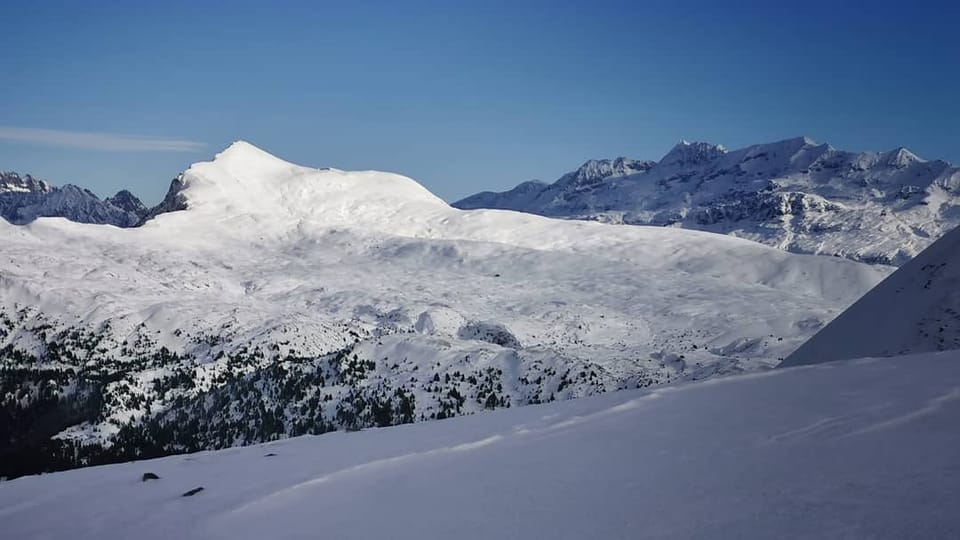Tignes Breaks Down Average C02 Emissions Per Visiting Skier
According to a recent survey carried out on behalf of French ski resort Tignes, the carbon footprint for a day's skiing there totals 48.9 kg CO2e per person, 52% of that for travel. The resort wants us all to do more to cut emissions.

Like most ski resorts Tignes is planning ahead for operations in a warming world. Once offering skiing year-round, it recently gave up trying to open its slopes in early autumn and is instead accelerating its energy, environmental and social transition, aiming to become fully sustainable by 2030.
According to a recent survey carried out on behalf of the resort, the carbon footprint for 1 day skiing in Tignes totals 48.9 kg CO2e per person, not a lot different to the western world’s daily average of about 40kg per person.
Interestingly though, take away travel, both to Tignes and within the resort, which represent 25.4kg and 52% of all emissions, and we’re down at 23.5kg for everything else – so much lower than the daily average in most people’s day to day lives at home.
In the audit “Community” came out as the second greatest part of emissions at 7,9 kgCO2e per person per day, mostly tied to lighting, heating and operating resort infrastructure, facilities and services related to tourism – besides the actually skiing.
This was closely followed, at 16%, by ski equipment emissions at 8.5 kgCO2e – based on the production and transport of things like skis, boots, gloves, goggles and so on. The message there being to reuse for as long as you can rather than buy news, however ‘eco freiendly’ the production process.
Food was next with 4kgCO2e per person making up 8% of the total, with Tignes noting that a vegetarian reduces his/her carbon footprint in that category by as much as 75%.
Next came tourist accommodation at 4% and 1.7 kgCO2e with operating the ski lifts, snowmaking and grooming coming in at the smallest share of emissions, just 3% and 1,4 kgCO2e
That’s perhaps because Tignes uses green electricity and biofuels.
“In order to ensure a sustainable future for alpine tourism and to contribute, when possible, to its preservation, there are a few simple individual measures that snow sports enthusiasts can take to reduce their carbon footprint: Avoid travelling by plane or car and travel by train/public transport. H heat accommodation to a maximum of 19°C during the day and 17°C at night. Favour a vegan/vegetarian diet and rent equipment,” a Tignes spokesperson said.
Two time-lapse cameras have been installed on the La Grande Motte glacier to help collect data, monitor the impact of global warming on the ice melt and provide food for thought on the evolution and adaptation of water How to reduce your carbon resources in the future.
This month, the young, elected members of the Children's Council in Tignes will plant a time capsule, equipped with a GPS beacon, in the bowels of the Grande Sassière glacier. The aim of the experiment is to follow the evolution of the glacier over a 10-year period.
The resort says that this scientific and educational project aspires to raise awareness on global warming in the area and to study the glacier melt.




